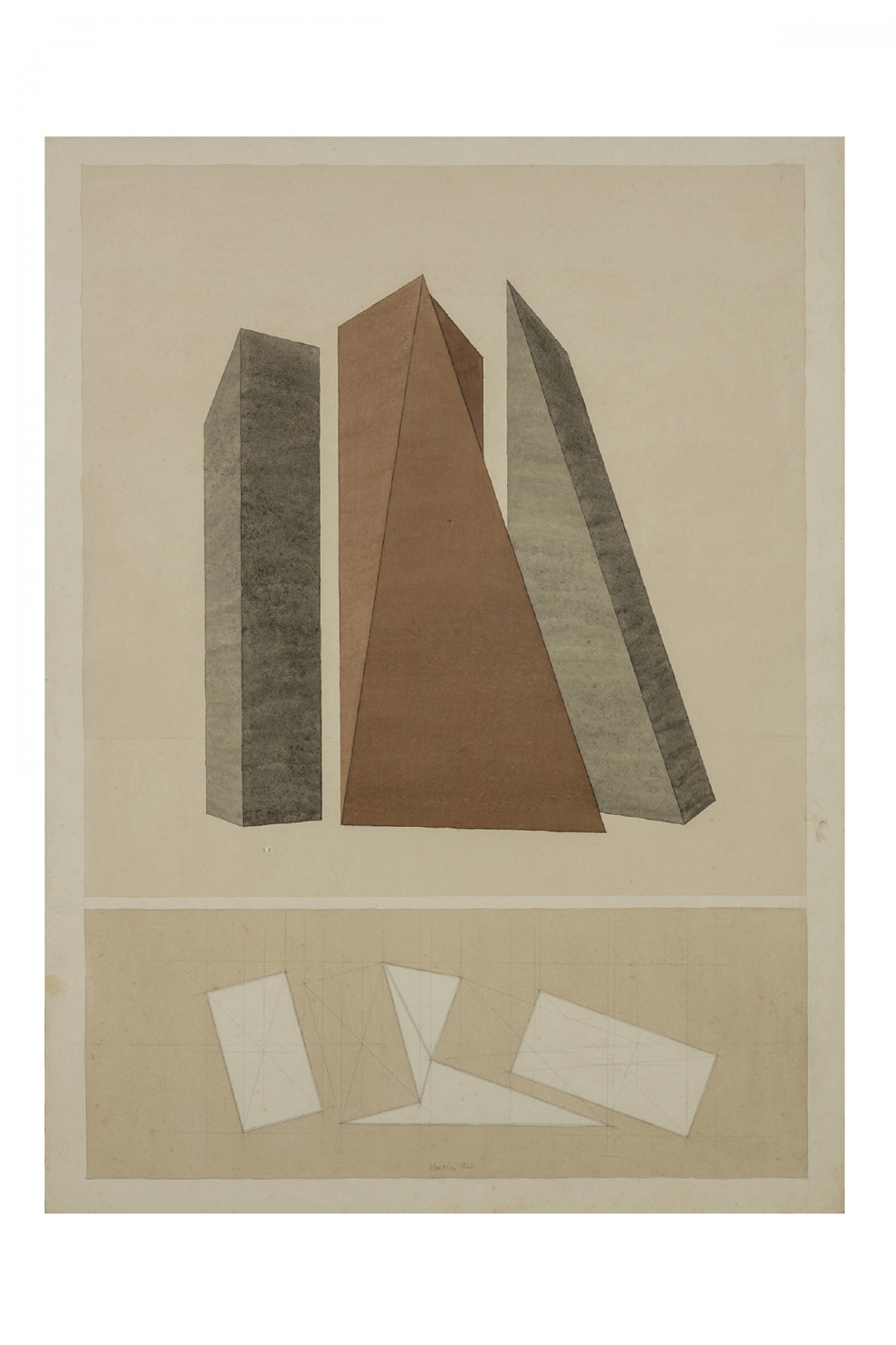GiuseppeUNCINI
Giuseppe Uncini. In The Beginning Was Drawing Drawings 1959-1977
03.2015–04.2015
Giuseppe Uncini. In The Beginning Was Drawing Drawings 1959-1977
03.2015–04.2015
Press Release
Giuseppe Uncini
In The Beginning Was Drawing.
Drawings 1959-1977
Opening: March 10, 2015
March 11 – April 11, 2015
In The Beginning Was Drawing.
Drawings 1959-1977
Opening: March 10, 2015
March 11 – April 11, 2015
The Marconi Foundation is pleased to present a tribute to Giuseppe Uncini.
Uncini was born in Fabriano in 1929. He moved to Rome in 1953, where he met a number of Italian and international artists, including Burri, Capogrossi, Afro, Mirko and Cagli.
His art is characterised by the use of non-conventional materials, such as iron and reinforced concrete, in the construction of large-scale works.
He is recognised as one of the main exponents of Italian art, creating numerous cycles of works over the years, such as the Terre, Cementarmati, Ferrocementi, Ombre, Muri d’ombra, Spazi di ferro, and Artifici, his last.
His entire artistic career centred on the evolution of a constant need to “build” the work, the symbol of nothing other than itself and its own generative principles.
In this context, drawing played a role of primary importance from the start, and constantly occupied a central role in the planning of his work.
The artist turned to drawing almost daily, not just as one of many art forms, but as a customary practice in the conception and actual formulation of a work.
The same drawing methods give rise to considerations that are equally relevant to the fields of painting and sculpture as to that of architecture.
Uncini was born in Fabriano in 1929. He moved to Rome in 1953, where he met a number of Italian and international artists, including Burri, Capogrossi, Afro, Mirko and Cagli.
His art is characterised by the use of non-conventional materials, such as iron and reinforced concrete, in the construction of large-scale works.
He is recognised as one of the main exponents of Italian art, creating numerous cycles of works over the years, such as the Terre, Cementarmati, Ferrocementi, Ombre, Muri d’ombra, Spazi di ferro, and Artifici, his last.
His entire artistic career centred on the evolution of a constant need to “build” the work, the symbol of nothing other than itself and its own generative principles.
In this context, drawing played a role of primary importance from the start, and constantly occupied a central role in the planning of his work.
The artist turned to drawing almost daily, not just as one of many art forms, but as a customary practice in the conception and actual formulation of a work.
The same drawing methods give rise to considerations that are equally relevant to the fields of painting and sculpture as to that of architecture.
The exhibition, organised in collaboration with the Archivio Uncini, contains three groups of drawings that correspond to similar periods in the artist’s work.
The first (1959-1964) includes works in pencil or ink, ballpoint or watercolour, for the most part related to the creation of the Cementarmati.
The second group covers the period between 1965 and 1970 and the artist’s new focus on the physical presentation of the relationship between light and shadow.
The third and final group documents the Terracementi and Colline artificiali (1971-1977), which years later inspired Artifici, his final series (2007).
The exhibition is completed by a number of pieces in iron and cement, including an important work from 1968, Sedia con ombra, which clearly illustrates Uncini’s desire to go beyond the surface of the painting and physically invade the space.
To mark the occasion, the Marconi Foundation will produce a catalogue curated by Bruno Corà and published by Cambi Editore.
In conjunction, Studio Marconi ’65 at Via Tadino 17 will present an interesting selection of drawings and studies from the same years, while on show at the MIART from 9-12 April will be Grande Parete Studio Marconi MT 6, a site-specific work created by Giuseppe Uncini in 1976 for Giorgio Marconi’s historic gallery.
Further news is that from 7 March 2015, the gallery Vistamare in Pescara – again in collaboration with the Archivio Uncini – will organise an exhibition of sculpture by the artist, from the first Cementarmati to the final Dimore.
The first (1959-1964) includes works in pencil or ink, ballpoint or watercolour, for the most part related to the creation of the Cementarmati.
The second group covers the period between 1965 and 1970 and the artist’s new focus on the physical presentation of the relationship between light and shadow.
The third and final group documents the Terracementi and Colline artificiali (1971-1977), which years later inspired Artifici, his final series (2007).
The exhibition is completed by a number of pieces in iron and cement, including an important work from 1968, Sedia con ombra, which clearly illustrates Uncini’s desire to go beyond the surface of the painting and physically invade the space.
To mark the occasion, the Marconi Foundation will produce a catalogue curated by Bruno Corà and published by Cambi Editore.
In conjunction, Studio Marconi ’65 at Via Tadino 17 will present an interesting selection of drawings and studies from the same years, while on show at the MIART from 9-12 April will be Grande Parete Studio Marconi MT 6, a site-specific work created by Giuseppe Uncini in 1976 for Giorgio Marconi’s historic gallery.
Further news is that from 7 March 2015, the gallery Vistamare in Pescara – again in collaboration with the Archivio Uncini – will organise an exhibition of sculpture by the artist, from the first Cementarmati to the final Dimore.









